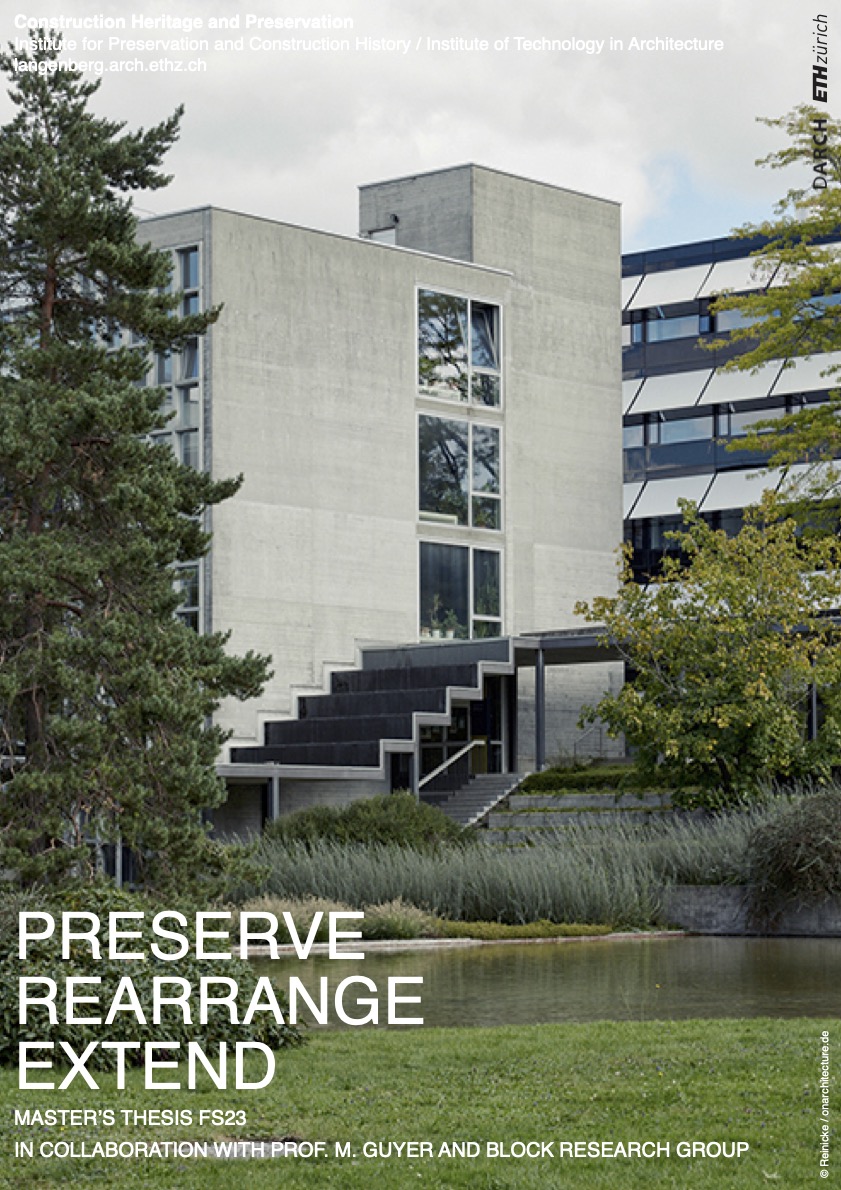
Master’s Thesis FS23
In collaboration with Prof. Mike Guyer, Prof. Dr. Philippe Block
Teaching Team: Silke Langenberg, Mike Guyer, Philippe Block, Rolf Imseng
We explore the question of how existing buildings can hold their own in the tension between preservation as cultural heritage and new usage and operational requirements. The focus is on finding approaches to preserve, repurpose and expand existing buildings. The goal is to give them an extended life cycle with a greatly reduced operational carbon footprint. In this context, the transformations should be comprehensively sustainable in social, ecological and economic terms.
In terms of society, the relationship between object and open space in urban design, spatiality, lighting and materialization in architecture, as well as diversity, publicity and communality in uses are important.
In terms of ecology, lightweight load-bearing structures in various materials that produce as little gray energy and CO2 emissions as possible are in demand. Operating systems should be innovative and efficient; PV systems are used on facades and roofs; additive constructions comply with circularity aspects; heat mitigation is achieved through water cycles and biodiversity.
In terms of economics, the focus is on efficient modular and prefabrication systems and intelligent construction methods.
In the diploma semester FS23 we will deal with the original buildings of the Hönggerberg campus, the university buildings by Albert Heinrich Steiner (1957-87), as well as the HIL building by Max Ziegler and Erik Lanter (1972-76). These buildings form the core of the campus and are very familiar to all of us. They still characterize the atmosphere of the campus with their exceptional urban setting, wonderful open spaces and specific architectures.